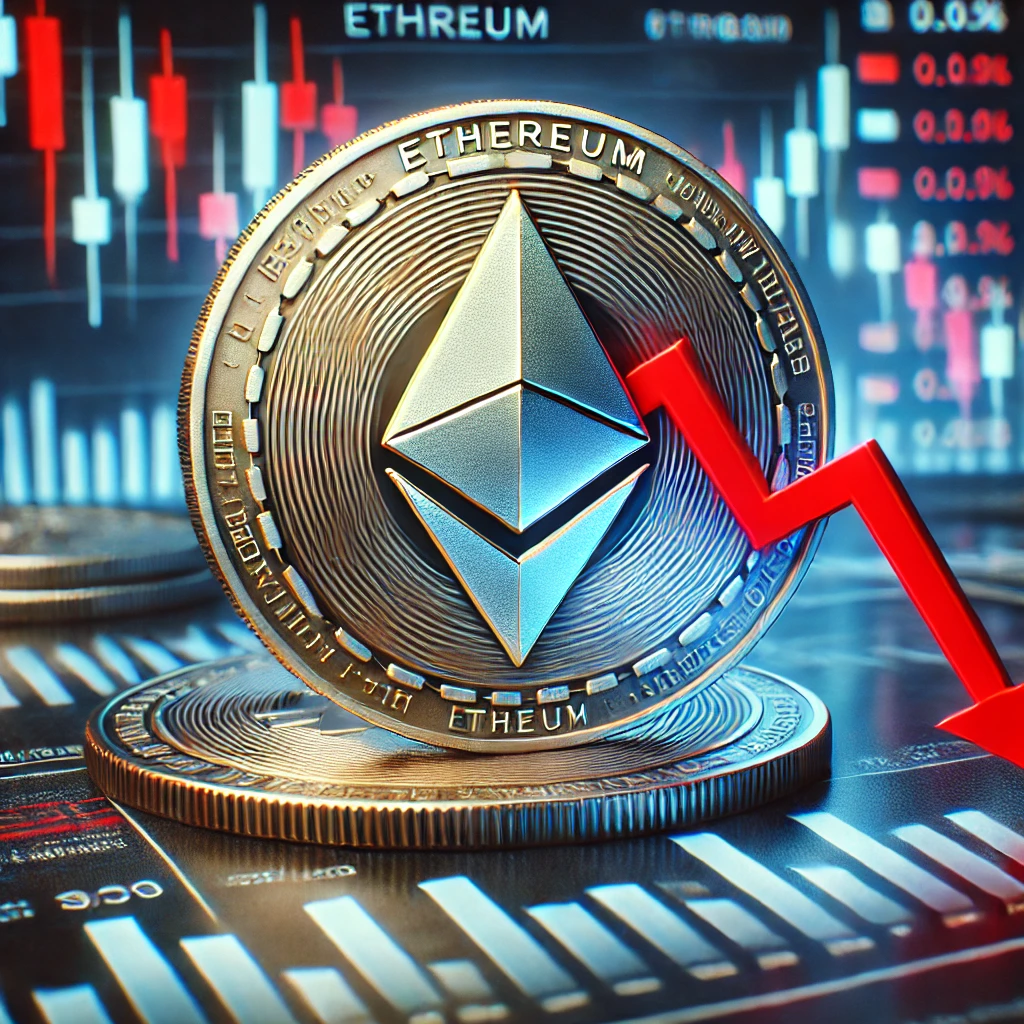Ethereum (ETH), the second-largest cryptocurrency by market capitalization, has always been a crucial player in the crypto ecosystem. However, recent data suggests a concerning trend—Ethereum’s decentralized exchange (DEX) volumes have dropped by 34% in a week, raising questions about ETH’s price prospects.
As DEX volumes decline, market participants are left wondering whether Ethereum’s price will suffer further losses. This article explores the reasons behind the drop in DEX activity, its potential impact on ETH’s price, and what the future might hold for Ethereum investors.
Why Are Ethereum DEX Volumes Declining?
1. Reduced Trading Activity
The decline in Ethereum’s DEX volumes suggests a broader drop in crypto trading activity. Many investors are holding back due to market uncertainty, leading to lower transaction volumes and liquidity issues across decentralized platforms.
2. Gas Fees and Network Congestion
Ethereum’s high gas fees have long been a barrier for traders. During peak network usage, transaction costs can spike significantly, discouraging users from conducting trades on DEX platforms like Uniswap, SushiSwap, and Curve Finance.
3. Shift to Centralized Exchanges (CEXs)
Despite the ethos of decentralization, many traders still prefer centralized exchanges (CEXs) like Binance and Coinbase due to their lower fees, faster transactions, and higher liquidity. A portion of Ethereum’s trading volume may have moved to CEXs, contributing to the DEX volume decline.
4. Regulatory Concerns
Ongoing regulatory scrutiny on DeFi protocols could be deterring institutional and retail investors from actively trading on decentralized exchanges. Governments worldwide are introducing stricter compliance measures, affecting user confidence in the DEX ecosystem.
How Does This Affect Ethereum’s Price?
1. Lower Demand for ETH
DEX trading heavily relies on Ethereum for transaction fees and liquidity provision. A decline in DEX volumes directly affects ETH demand, leading to potential downward pressure on its price.
2. Decreased Network Activity
Ethereum’s network thrives on active transactions, from NFT sales to DeFi trades. A significant drop in activity could indicate lower network utility, reducing ETH’s perceived value among investors.
3. Bearish Market Sentiment
A drop in trading volumes can reflect weak market confidence. If traders hesitate to engage with Ethereum’s DeFi ecosystem, this sentiment could spread to other aspects of the ETH market, leading to further price corrections.
Can Ethereum Recover?
1. Ethereum Layer 2 Scaling Solutions
Layer 2 solutions like Arbitrum, Optimism, and zkSync are helping reduce Ethereum’s gas fees and improve transaction speeds. Wider adoption of these solutions could encourage traders to return to DEXs, boosting ETH’s price.
2. Ethereum’s Upcoming Upgrades
Ethereum’s continued upgrades, including potential improvements to staking and scalability, could reignite interest in the network. The Ethereum Foundation is actively working on reducing gas fees and improving the overall user experience.
3. Return of Bullish Market Conditions
If Bitcoin or the broader crypto market enters another bull run, Ethereum will likely benefit. Historically, altcoins like ETH tend to rally when Bitcoin shows strength, which could offset the effects of declining DEX volumes.
4. Increased Institutional Adoption
More institutions are exploring Ethereum for smart contracts and DeFi applications. If large-scale investors increase their holdings, ETH could see renewed demand, pushing its price higher despite short-term declines.
Technical Analysis: Key Support and Resistance Levels
Support Levels
- $1,800 – A key support zone where ETH has bounced multiple times.
- $1,600 – A crucial level that, if broken, could signal further downside.
Resistance Levels
- $2,200 – ETH needs to break past this resistance to regain bullish momentum.
- $2,500 – A key psychological level that could indicate a trend reversal.
Conclusion: Will ETH’s Price Continue to Struggle?
The 34% drop in Ethereum DEX volumes is undoubtedly a bearish signal, indicating lower network activity, reduced trading interest, and potential price weakness. However, Ethereum remains a dominant force in the crypto space, and its long-term fundamentals remain strong.
While short-term price dips are possible, Ethereum’s ongoing developments, Layer 2 scaling, and institutional interest suggest that ETH still has the potential for future growth. Traders should closely watch key support and resistance levels while monitoring market sentiment for signs of a potential recovery.

